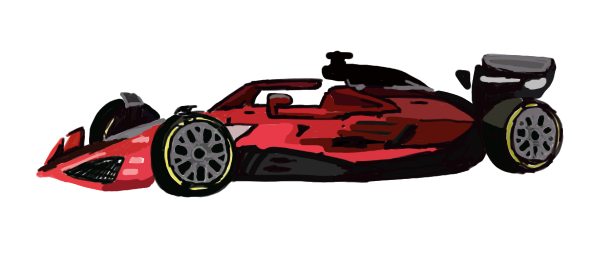Beginners guide to Formula 1
April, 2023
What is Formula 1?
Formula 1 is widely considered to be the pinnacle of motorsport
racing. Ten teams with two drivers each compete against one another
every season in a neck to neck race to the finish line. F1 cars can reach
up to speeds of 200 miles per hour, and are the foundation for the
iconic race car roars . From the tropical Singapore street race to the
iconic Monza race track in Italy, F1’s influence, history, and culture has
been growing around the globe.
How do the races work?
Races usually take place on multiple consecutive weekends, starting with practice on Fridays,
qualifying on Saturdays, and the race on Sundays. Drivers are given Fridays to practice on the track,
as well as a final chance to fine tune their cars for qualifying and the race. On Saturday, the drivers
compete in a qualifying format that determines their starting positions for the race, which can either
make or break their weekend depending on where they start. Starting towards the front usually gives
the driver an advantage, as there are less cars they need to overtake in order to climb towards the
top. Starting further back in the group places the racer at a major disadvantage as it puts the driver
behind more cars, which consequently means more overtakes. Finally, Sunday is the big race, where
the drivers head onto the track and race for as many points as possible. Only the top ten drivers earn
points, however, setting everyone on the grid, even teammates, against one another.
What is the strategy to winning?
With 20 drivers on the grid, competition flares high when the race arrives. Teams have to use all their
resources to their advantage in order to gain points, which accumulate to their final standing at the end of
the year. Typically, teams will play both of their drivers to their advantage, using various strategies to give
them the edge. Some strategies include using one driver to stall the opposing team while their teammate
who is behind catches up, or giving each other “slipstreams,” which allow for less air resistance, allowing
the car to move faster. Pit stops, used to change tires, also play a big part in determining the rankings.
Formula 1 has three types of tire compounds that the drivers and their teams can choose to use. They
range from soft tires, which allow the car to drive the fastest but last the shortest amount of time, to hard
tires, which drive the slowest but have the longest life-span. In between the two are medium tires, which
is a mix between both the soft and hard tires. Which tires the driver decides to use comes down to the
strategy they choose to play when race day comes around.